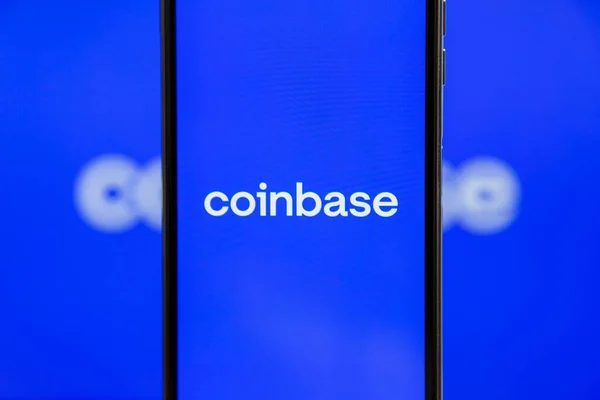What does Coinbase's inclusion in the S&P 500 mean for the future of crypto?
Written by: SuperEx
Compilation: Vernacular Blockchain

In a milestone event in the cryptocurrency industry, Coinbase Global Inc. (NASDAQ:COIN) will join the S&P 500 on May 19, 2025, replacing Discover Financial Services, which was acquired by Capital One. This is the first time that a cryptocurrency trading platform has been included in this benchmark index, marking an important step towards mainstream acceptance of digital assets.
Let's break down why this is important, how the market reacts, and what possible knock-on effects lie ahead.
TheS&P 500 is more than just a list – it's a financial landmark
First of all, the S&P 500 is not your average stock ranking. It is regarded as the gold standard for the U.S. stock market, contains the 500 largest U.S. listed companies, and represents more than 80% of the total value of the U.S. stock market. It is a benchmark for investors to measure performance and stability.
When a company joins the S&P 500, it sends a message: "This company is serious. "
For Coinbase, which went public in a bull market in 2021 and has gone through multiple market cycles, joining the S&P 500 is more than just an honor. This shows that the cryptocurrency world is not just surviving, but is becoming an integral part of it.
Oneof the
most immediate consequences of Coinbase's inclusion in the S&P 500 is that a large amount of institutional funding will indirectly reach cryptocurrency. Why? Because many funds that track an index – such as pension funds, ETFs, mutual funds – automatically adjust their holdings to reflect changes in the S&P 500.
This means that they will buy Coinbase (COIN) shares. Not because they suddenly like cryptocurrency, but because they have to.
This passive contact is significant. Even if these funds don't invest directly in Bitcoin or Ethereum, their portfolios will now hold stakes in cryptocurrency infrastructure. This is likely to soften the traditional financial community's resistance to cryptocurrencies, leading to more research, more investment, and – perhaps most importantly – more regulation that sees cryptocurrencies not as a threat, but as an emerging asset class.
Coinbase's share price vs. market
sentimentLet's take a look at the data. Coinbase shares surged nearly 10% after the announcement, reaching $240 at one point, before leveling off. In the current market conditions, this increase shows that traders understand the importance of this inclusion.
This is not only bullish for COIN, but also for the sentiment of the entire cryptocurrency market. Bitcoin price rebounded from a slight pullback to above $103,800 following the news. Ethereum and other altcoins are also following this trend.
Wall Street analysts are also watching. Oppenheimer raised the price target on Coinbase stock to $293, citing the expected inflow and higher visibility. Some are even starting to suggest that other crypto-native companies could follow Coinbase into the S&P 500 in the coming years.
Symbolism: Cryptocurrencies on the big stage
To be honest, cryptocurrencies have always had image issues. It is seen as the "Savage West" and is the domain of speculators, hackers, and technology enthusiasts. But the addition of a crypto company to the S&P 500 sends a different message to the masses: cryptocurrencies are no longer marginal.
It's easy to underestimate the impact of perceptions on financial behavior. Institutional investors who once ridiculed cryptocurrency may take a fresh look at it. Regulators are likely to take a more balanced approach. Technical talents who have previously been hesitant to enter the field may decide to join.
Symbolically, this is just as important as the first Bitcoin ETF or El Salvador's Bitcoin bill.
Implications for cryptocurrency regulation
Now, let's talk about policy.
Coinbase isn't just a tech company, it's also the epicenter of the regulatory storm in the United States. It is currently engaged in multiple lawsuits and arguments with the SEC over what constitutes a security. By joining the S&P 500, Coinbase is recognized not only for its financial performance, but also for its ability to operate in – or against – the U.S. regulatory framework.
Coinbase's presence in Washington is expected to grow even further. The legitimacy that comes with S&P 500 membership will give its policy stance more weight.
For the crypto industry, this could mean clearer rules, faster regulatory progress, and potentially more favorable treatment for rule-abiding exchanges and token projects.
Broader impact on crypto popularity
In addition to stocks and indices, Coinbase's inclusion in the S&P 500 could further push cryptocurrencies into consumer awareness.
Picture this: your retirement funds, banks, and university foundations all hold Coinbase stock. Suddenly, cryptocurrencies are no longer some kind of unfamiliar investment. It becomes a part of your financial life, even if you don't realize it.
This approach has allowed the popularity of cryptocurrencies to a level that marketing can't match.
More people are expected to start asking about what Coinbase is, how it works, and what it means. Every time these questions are asked, cryptocurrencies become a little more mainstream.
Bottom line: It's a tipping
pointCoinbase's addition to the S&P 500 is a tipping point. It's not just about one company, it's about the evolution of the entire industry. We are moving from the fringe to the mainstream, from disruptors to becoming part of the existing system.
Cryptocurrencies still have a long way to go. But with such a move, it's hard to deny that the road has been paved – and that more people are walking it.
For investors, builders, and believers in decentralized technology, this is enough to get excited.
